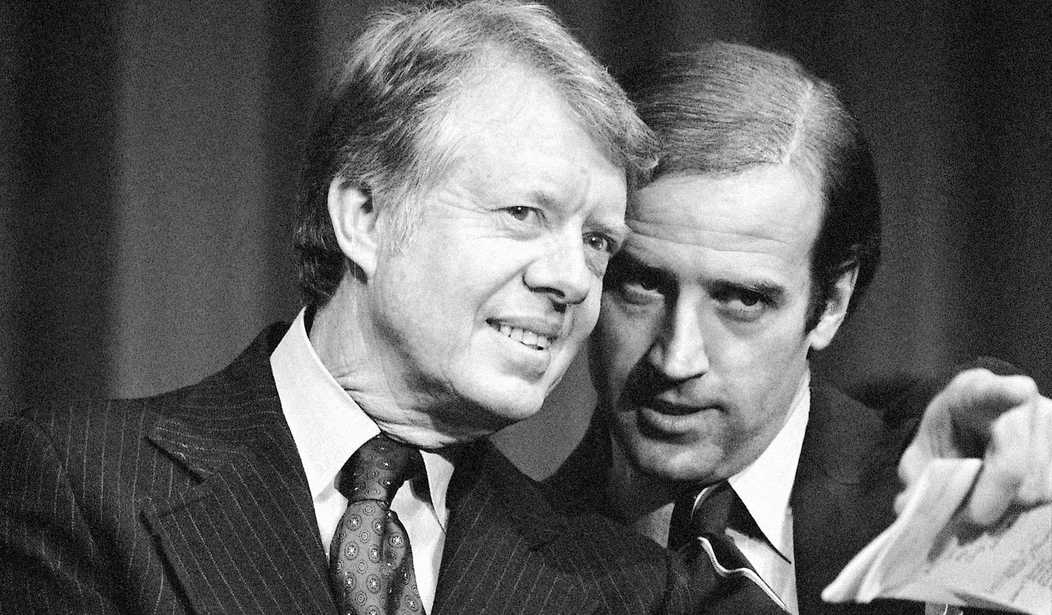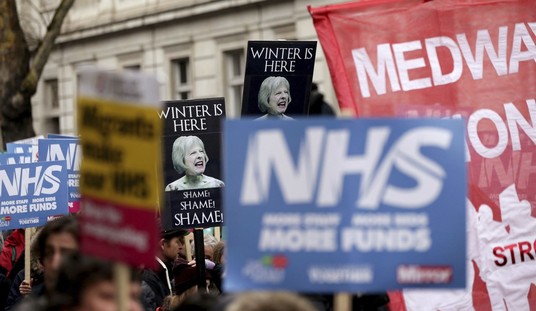Biden administration officials have grown more and more adamant that Americans haven’t yet grasped how good we have it, economically speaking. With inflation spiking to records not seen in almost forty years, the White House has scrambled to spin other metrics to get the media to project a narrative of recovery.
That effort is doomed to fail, writes the New York Times’ David Leonhardt. Americans think the economy is in “rough shape” because they are participating in the return of malaise and can’t avoid seeing it:
Offices remain eerily empty. Airlines have canceled thousands of flights. Subways and buses are running less often. Schools sometimes call off entire days of class. Consumers waste time waiting in store lines. Annual inflation has reached its highest level in three decades.
Does this sound like a healthy economy to you?
In recent weeks, economists and pundits have been asking why Americans feel grouchy about the economy when many indicators — like G.D.P. growth, stock prices and the unemployment rate — look strong.
But I think the answer to this supposed paradox is that it’s not really a paradox: Americans think the economy is in rough shape because the economy is in rough shape.
This malaise is quantitatively worse than the original Jimmy Carter version, too. It’s broader, seeping into every corner not just of the economy but also into almost every facet of American life:
Many services don’t function as well as they used to, largely because of supply-chain problems and labor shortages. Rising prices are cutting into paychecks, especially for working-class households. People spend less time socializing. The unending nature of the pandemic — the masks, Covid tests, Zoom meetings and anxiety-producing runny noses — is wearying.
While some of these disruptions are minor inconveniences, others are causing serious troubles.
Inflation’s only one piece of this malaise, albeit a very significant piece. Washington Post economics reporter/analyst Heather Long put today’s data in perspective, and points to a very worrisome driver:
It's clear that high inflation is not going away any time soon.
Yes, December may see some relief on gas prices.
But rents continue to rise, food prices (esp. meats) continue to rise, and car/furniture/goods prices remain high.https://t.co/gUtlk82rP5 pic.twitter.com/GNszOjOebn— Heather Long (@byHeatherLong) December 10, 2021
Long had warned in July that the rapid increase in rent prices would quickly burden families struggling in the midst of all the other crises households face:
Rents are starting to surge in many parts of the country as the economy reopens and young people return rapidly to cities. On top of the influx of millennials and Gen Z renters coming back after staying with family or friends, people who can work from anywhere are still relocating to lower-cost cities, and the hot home sale market has caused some baby boomers to sell their family homes and rent again now that their kids are grown.
Nationwide, rent prices are up 7.5 percent so far this year, three times higher than normal, according to data from Apartments.com. Analysts expect rent prices to keep climbing for the foreseeable future, a major burden for renters and a warning sign that higher inflation could linger far longer than the White House and Federal Reserve keep predicting.
“I think we’re going to see increases for the next 12 to 18 months,” said Robert Pinnegar, president of the National Apartment Association. “We’ve never had three generations in the rental housing space, at least not in the numbers we’re seeing now.”
This is why inflation is a bigger problem than the math reveals. Long tells the story of people receiving notices from landlords that their rent will increase by a third in the coming year. This is likely not just a reflection of the supply-demand curve in rentals but also fallout from eviction moratoria over the last two years, creating massive costs that landlords now need to unwind. But regardless of the causes, the impact creates a large and rational sense of economic insecurity and dislocation among renters, which form a large part of our economy.
Put that on top of all the other social ills Leonhardt lists, and add to that spiking crime in urban and first-ring suburban areas around the country. Leonhardt doesn’t mention crime or policing in his essay, as he focuses more on the economy. However, the rising levels of crime has corrosive economic as well as social impacts. That too takes us back to the high-crime late-1970s and the sense that we have lost significant control of our public spaces. That creates even more dislocation and insecurity, which in turn feeds into a sense of decline that Americans have not experienced since, well, the last time we had inflation and crime spiking at the same time 40 years ago.
Jimmy Carter delivered his infamous “malaise” speech in July 1979, which didn’t actually include that word but advised Americans to make the best of the bad situation. The speech was actually titled “Crisis of Confidence,” and that’s precisely what we have now — especially in the leadership that once again tries to sell us on the idea that this is as good as it gets.








Join the conversation as a VIP Member